Knee Pain
Hollywood, FL Knee Pain Specialist
When Dealing with knee pain, a few important questions to ask yourself are:
- Do you have pain on the inside or outside of your knee?
- Is there pain above, under or below your knee cap?
- Does running or jumping cause knee pain?
- Do you feel discomfort getting up from sitting?
- If you sit for an extended period of time, does your knee throb?
Most active individuals experience knee discomfort at some point during their training. Because the knee is second in line for shock absorption after the foot/ankle and has a limited range of motion, it is a joint that is very vulnerable to injury and relies heavily on a network of ligaments for stability.
The most common injuries to the knee include:
- Overuse injuries
- Patellar Tendonitis/Jumper’s Knee
- Bursitis
- Meniscus injuries
- Collateral ligament strains or tears
- Patella Fractures/Dislocation
- Osteoarthritis
- IT Band Syndrome
- Osgood-Schlatter Disease
Structures that can become damaged with a knee injury:
- Anterior Cruciate Ligament: Limits rotation and anterior movement of the tibia (shin)
- Posterior Cruciate Ligament: Limits backward motion of the tibia (shin)
- Medial Collateral Ligament: Stabilizes inner knee
- Lateral Collateral Ligament: Stabilizers outer knee
- Medial/Lateral Meniscus: Shock absorbers for inner/outer knee
- Patellar Tendon: Anchors the patella to the femur
With the exception of trauma, in which case an orthopedic referral is usually required, the majority of knee pain is due to overuse injuries resulting from biomechanical faults. For example, repeated knee valgus during running or anterior translation of the knee during squatting can lead to pain and inflammation over time.
The knee falls between two very mobile and dynamic joints, the hip and the foot/ankle complex. If either of these joints is not able to express proper mobility for the task or demand, the knee will be forced to compensate, which may put excessive stress on the soft tissues of the knee or the joint itself.
For example, a tennis player hitting a forehand requires a significant amount of thoracic rotation as well as hip rotation. If these joints are not able to rotate through the swing, the body will compensate by finding rotation through the knee, a joint that is not meant to express a great deal of dynamic rotation.
What does a Knee Pain Evaluation look like?
For our patients that have knee injuries, we will first take a thorough history and perform a complete neurological and orthopedic exam to determine whether or not the injury warrants imaging such as an X-ray or MRI to gain even further understanding to the extent of the injury.
Once we have figured out specifically which tissues in the knee are injured, we will perform a comprehensive movement and biomechanics exam to determine how the injury occurred and which other areas we need to address to ensure that you do not experience a knee injury again.
In order to properly correct these biomechanical faults, we will look at how your body moves as a whole including your breathing, spine control, hip mobility, and foot/ankle stability. Performing a thorough evaluation ensures that not only will your pain be abolished but we will be able to fix the underlying cause of your discomfort. It is very frustrating to have an injury resolved only to reinjury yourself weeks or months later.
Our treatment approach is always custom-tailored to the finding of our examination as well as to your goals, but in most cases, we have found that a combination of chiropractic adjustments, active release technique, and specific rehabilitation exercises produce the quickest and longest-lasting results.
Chiropractic Adjustments for Knee Injuries
Joints that we generally find are restricted and require a chiropractic adjustment on individuals with a non-contact knee injury include SI joint extension, midfoot dorsiflexion, calcaneal eversion, and the fibular head. Getting regular chiropractic adjustments to your lower extremity will take the pressure off of your knee and allow your joints to work together to distribute the work-load.
Manual Therapy for Knee Injuries
When we are working with an individual suffering from a non-contact knee injury, one of our main objectives early in treatment is to take muscular tension off of the knee itself to allow for healing such as the quadriceps muscle group and the hamstring muscle group.
Once we have released tension from these muscles using techniques such as active release technique, dry needling, and instrument-assisted soft tissue, we will also address muscles of the lower leg to ensure that the foot and ankle are properly balanced to take the stress off of the knee. Oftentimes muscles such as the fibularis group, tibialis anterior, and toe flexor group require soft tissue release in order for the foot to move efficiently during the gait cycle.
Corrective Exercise for Knee Injuries
The most important part of any care plan and particularly for the knee is the corrective exercise program. We can have a profound impact on the patient with hands-on therapy, but all goal is always to arm you with the tools to stay healthy on your own and build a bulletproof body.
During our evaluation, we will look at your breathing patterns as well as the active mobility of the spine, hip, knee, ankle, and foot in order to determine which exercises are best suited for you. We will generally perform 1 or 2 exercises in the office during your visit and will send you home with the exercise to perform on your own when you are not in the office. This ensures that conditions will be resolved as quickly as possible and will prevent future episodes.
If you are dealing with an acute or chronic knee injury and would like a comprehensive evaluation and treatment plan from one of our physicians, please give us a call or book your appointment below!

